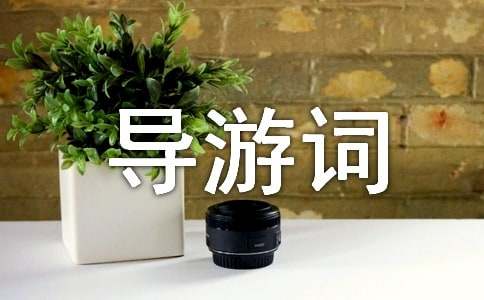西夏王陵英文导游词
西夏王陵又称西夏帝陵、西夏皇陵,是西夏历代帝王陵以及皇家陵墓。以下是小编带来的西夏王陵英文导游词,欢迎阅读。

Yuanhao assumed the imperial title, it was known as the Xia Kingdom. In 1227, Western Xia was conquered by Yuan emperor Tai Zu . The Western Xia had ten ruling emperors over a 190 year period. The sites of the imperial mausoleums were chosen nearby at the east foot of the Helan Mountains, 25 kilometers west of Yinchuan City.
On the southeast corner at the foot of the Helan Mountains are two large mausoleums, probably Jialing and Yuling mausoleums of Li Jiqian and Li Demin, who were posthumously designated Emperor Tai Zu and Emperor Tai Zong. The architectural arrangement of the mausoleum area makes these two mausoleums most prominent, followed by others built later.
Like other imperial tombs, Western Xia mausoleums were composed of two architectural units, the mausoleum gardens above ground and underground palaces. All the mausoleum gardens faced south, and their architectural forms above ground have some unique characteristics, though they are quite similar to mausoleums of the Tang and Northern Song dynasties in Gongxian County.
Based on some excavations, each mausoleum had a unified layout, occupying an area of more than 100,000 square meters, surrounded by inner and outer walls. At each corner of the mausoleum gardens were watchtowers, providing visual indicators of the boundaries, serving functions similar to those of watchtowers of the Imperial Palace in Beijing. Mausoleum gardens were organized from south to north: Stone gates, tablet pavilion, outer city, inner city, hall furnished as an imperial bedroom and spiritual terrace.
In each of the four inner city walls was a gate; between the hall and terrace was an earth ridge shaped like a fish back, about 50 meters long. It was the earth covering of the tomb passage. The northern tip of the ridge was the highest point of the mausoleum garden, and was the mound above the underground palace. The mound, also known as the spiritual terrace, can be seen from some distance because of its height.
The unique characteristics of Western Xia mausoleums are clearly visible on the spiritual terraces. The mausoleum mounds of the Han, Tang and Northern Song dynasties are generally high, square-based packed earth mounds with tapering tops cut flat and gently sloped sides. Completely different, the mounds of Western Xia mausoleums look like squat Buddhist pagodas, round or octagonal and about 20 meters high. Examples seen today have five or seven stories, each of which is built with flying rafters overlaid with rows of tiles, richly decorated with an interspersing of glazed green tiles. The sides of the spiritual terraces are painted a deep red, the red walls and the green tiles providing a striking contrast, making it easy to imagine how magnificent the spiritual terraces must have been.
Notes:
1. Imperial Tombs of Western Xia 西夏王陵
2. Genghis Khan 成吉思汗
3. Helan Mountains 贺兰山
4. Forbidden City 紫禁城
【西夏王陵英文导游词】相关文章:
成吉思汗陵英文介绍04-13
云南英文导游词01-17
重庆英文导游词01-17
上海英文导游词02-24
雍和宫英文导游词02-28
漓江英文导游词01-14
黄山英文导游词01-15
故宫英文导游词01-15
华清池英文导游词02-07






